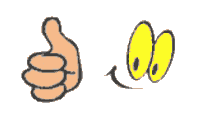EVALUATION OF WATER QUALITY MODELLING PARAMETERS: TOWARDS THE EVOLVEMENT OF RE-AERATION COEFFICIENT FOR RIVERS IN THE NIGERIAN ENVIRONMENT
By
DAVID OLUGBENGA OMOLE B.Eng (FUTA), M.Eng (COVENANT), MNSE, COREN Matric. No: CUGP040092
Presented To
Department of Civil Engineering
ABSTRACT
This study was carried out on River Atuwara in Ota, Ogun State, Nigeria with the aim of developing a coefficient of re-aeration model applicable to River Atuwara and other rivers in the Nigerian environment. This was achieved by sourcing for data once every month from 22 sampling locations of interest within a pre-selected segment of the river over a period covering the dry and wet seasons. The data collected include hydraulic data (depth, width, velocity and time of travel) and water quality data such as Dissolved Oxygen (DO) and Biochemical Oxygen Demand (BOD). Excel Spreadsheet and MATLAB were used for data processing. Regression analysis was carried out where stream velocity and depth were the regressors and the re-aeration constant k2 (as a function of BOD, DO and Temperature) was the dependent variable. A coefficient of re-aeration, k2, (Atuwara re-aeration model) was developed and validated statistically. Its performance was also verified by comparing the model with 10 other internationally recognized models. It was found that even though Atuwara model performed better than Agunwamba model and most of the other well cited models, both Atuwara model and Agunwamba model could be safely adopted for future water quality modelling researches in the Nigerian environment. Results of detailed water analysis of samples from River Atuwara shows high level of pollution hence it is unfit for human consumption without adequate treatment. It is recommended that River Atuwara and similar rivers in the country should be regularly monitored for quality control.
TABLE OF CONTENTS PAGE
Title Page i
Declaration ii
Certification iii
Dedication iv
Acknowledgement v
Table of Contents vii
List of Figures x
List of Tables xi
List of Plates xiv
Abbreviations and Symbols xv
Abstract xvi
CHAPTER ONE: INTRODUCTION
1.1 Background Information 1
1.2 Water Quality modelling 3
1.3 Description of Study Location 5
1.4 Statement of The Problem 6
1.5 Aim 6
1.6 Objectives 6
1.7 Significance of Study 6
1.8 Scope of Study 7
CHAPTER TWO: LITERATURE REVIEW
2.1 Water Quality Modelling as a Field of Study 8
2.2 Coefficient of Re-aeration, k2 9
2.2.3 The Indian k2 Model 13
2.2.4 The Chilean k2 Model 14
2.2.5 The Nigerian k2 Model 15
2.3 Water Laws and Standards 15
2.4 Statistical Analysis 17
2.4.1 Some Relevant Statistical Operations 17
2.4.2 Statistical Software 19
2.4.3 Model Calibration and Validation in Water Quality
Data 20
2.4.3.1 Sum of Squares Due to Error 21
2.4.3.2 R-Square 21
2.4.3.3 Degrees of Freedom Adjusted R-Square 22
2.4.3.4 Root Mean Squared Error 22
CHAPTER THREE: METHODOLOGY
3.1 Selection of the Study Area 24
3.2 Determination of Sampling Stations 27
3.3 Field Activities 49
3.3.1 Field Observations 31
3.3.2 Field Sampling Visits 31
3.3.2.1 Rationale for Gathering Data Once Every Month 32
3.3.2.2 Activities During the Field Exercises 33
3.4 Materials 34
3.5 Laboratory Analysis 36
3.6 Data Analysis 37
3.6.1 Time of Travel 38
3.6.2 Re-aeration Coefficient Model 39
CHAPTER FOUR: DATA PRESENTATION AND INTERPRETATION
4.1 Data Gathering 40
4.1.1 Hydraulic Data 41
4.1.2 Physico-Chemical Data 50
4.1.3 Monthly Variations in DO, Temperature, Stream Depth 57
4.2 Computation of Measured k2 63
4.3 Re-arrangement of Sampling Stations 67
4.3.1 Time of Travel 68
4.3.2 Hydraulic Radius 80
4.3.3 Ultimate BOD and De-oxygenation Rate 80
4.3.4 Saturation DO and the Upstream and Downstream DO deficits 80
4.3.5 Determination of k2 80
4.3.6 Model Parameters 80
4.3.7 The Model 83
4.3.8 Comparison with other Selected Models 83
4.4 Water Use Practices 103
4.5 Pollutants and Public Health Implications 106
CHAPTER FIVE: CONCLUSION AND RECOMMENDATION
5.1 Conclusion 110
5.2 Contribution to Knowledge 111
5.3 Recommendations 111
REFERENCES 113
APPENDICES
Appendix 1: Matlab Code for Beta 121
Appendix 2: Matlab Model Output 128
Appendix 3: Matlab Code and Output for Plot of all Models 132
Appendix 4: Mix Calculations 140
Appendix 5: Laboratory Reports 147
Appendix 6: Procedure for data Analysis 160
LIST OF FIGURES PAGE
Figure 1.1 - Nigerian Household distribution by source of water supply 2
Figure 1.2 - Nigerian Household distribution by Toilet Facilities 3
Figure 1.3 â€" General Layout of the Study area 5
Figure 3.1â€" Field Sampling Stations 28
Figure 3.2 â€" Linear representation of Sampling Points 29
Figure 3.3 - Sampling Cross-section 33
Figure 4.1 â€" An 8-month mean stream velocity record 59
Figure 4.2 â€" An 8-month mean ambient temperature record 60
Figure 4.3 â€" An 8-month mean water temperature record 61
Figure 4.4 â€" An 8-month mean stream depth record 61
Figure 4.5 â€" DO Fluctuations over an 8-month period 62
Figure 4.6 - Flowchart showing the progression of the statistical analysis 86
Figure 4.7 â€" Plot of 11 models using January data 93
Figure 4.8 â€" Plot of measured k2 against computed k2 using January data 94
Figure 4.9 â€" Plot of 11 models using March data 96
Figure 4.

